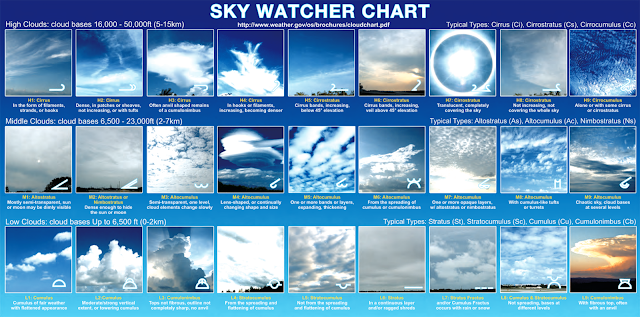This year's theme for World Meteorological day is *Understanding Clouds*.

Clouds are created made of small drops of water, clustered together.
For *beginners* there are the 3 basic types of clouds:


Cumulus - thick, puffy clouds that tend to be white on top and on the edges with a darker, flat bottom. They kinda look like cotton-balls or cauliflower (depending on your preference ;) ).

Cirrus - wispy, transparent / white, icy clouds. They are sheer clouds actually composed of ice crystals!
Stratus - low hanging clouds in dark/gray layer. These clouds can produce drizzle, ice prisms, and snow.
Understanding these clouds helps to understand weather, and to forecast the weather you can expect!
Here's a more advanced cloud chart from NOAA (and a link to a NOAA .pdf of clouds):
 |
| click to view this chart larger! |
...for more information about World Meteorological Day

No comments:
Post a Comment